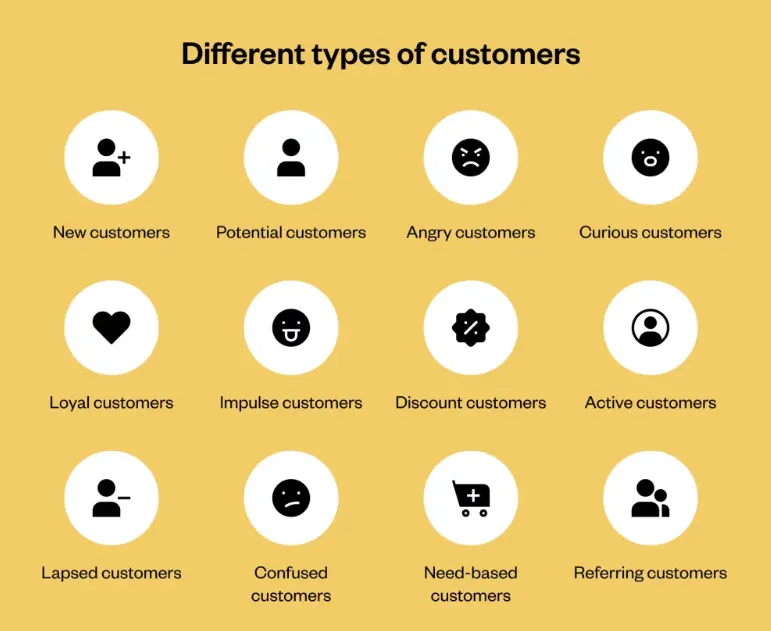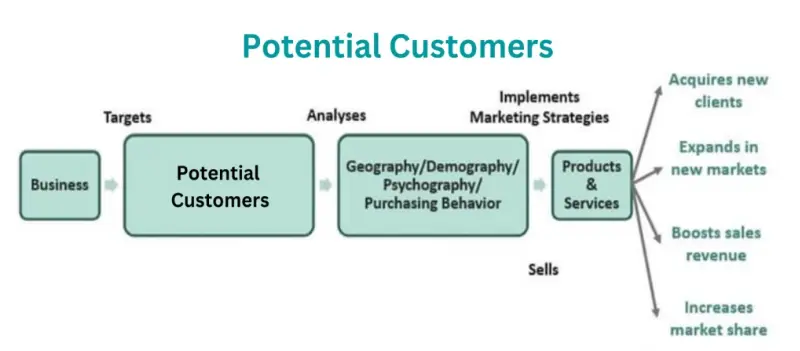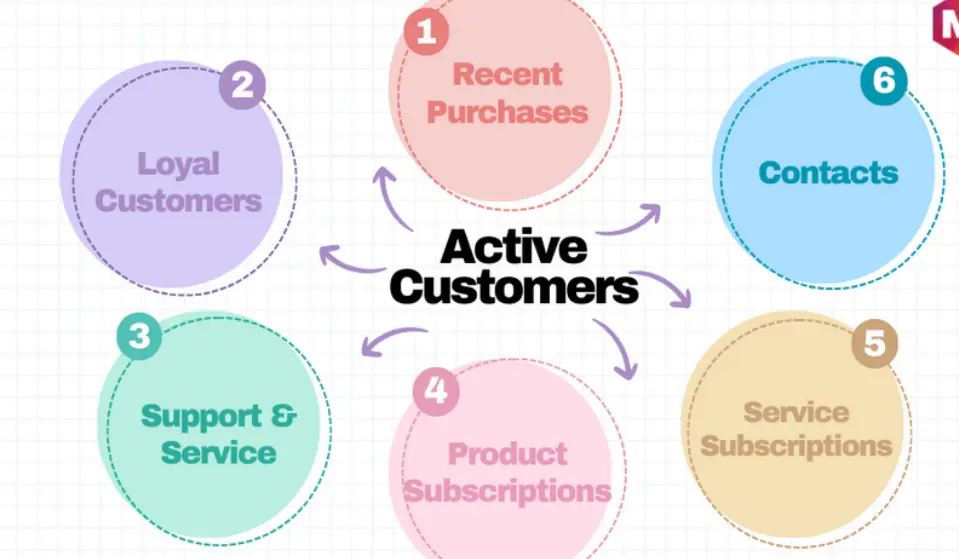Introduction
Who doesn't want loyal customers who keep coming back? The truth is, that not all types of customers are created equal. Some are easy to please, while others are harder to engage. Some happy-go-lucky customers are always satisfied, and then some can never be pleased. Understanding your types of customers is key to building lasting relationships and driving growth.
Like each finger of your palm, each customer is different with unique needs and problems. This highlights the need for understanding the types of customers specifically along with their needs, and the solutions they seek.
In this guide, we will explore the different types of customers and how to engage them. Let's Begin.
Understanding the Types of Customers and How to Engage Them
Understanding the different types of customers is crucial for businesses aiming to deliver personalized experiences. By segmenting customers based on various criteria, you can effectively tailor your products and services to meet their specific needs and preferences.

New Customers
New customers are the first types of customers to join your customer base. When new customers make their first purchase, they are typically more receptive to your messaging than at any other point in their relationship. And they are the most active customers. So make sure you make the most of every contact.
What do these types of customers need?
These types of customers typically need:
A smooth onboarding process
Resolution of simple issues
A smooth customer journey
How can you bring these types of customers all together?
Let's look at how to engage these types of customers:
Empower your customers: Help new customers fully experience the benefits of your product or service. Clearly explaining your product's features and how to best use them can increase customer loyalty.
Interact effectively: There are many options for customer service, but digital channels are paramount.
Appreciate and build relationships: Customers will turn away from your brand if they don't feel valued. So provide flawless service, and training and collect feedback through customer satisfaction surveys.
Cultivate social proof: To encourage new customers' loyalty to your business, cultivate social proof. People often mirror the behavior of others and subconsciously seek external validation.
Potential Customers
A potential customer is a "bystander" who is just browsing your website and hasn't made a decision yet. They may have shown interest by filling out a contact form or subscribing to your digital newsletter, but they probably don't plan to buy anything right now.
You need to convince your potential customer that your offer is the best solution to their problem.

How to convert these types of customers?
Let's see how to target this types of customers:
Make a great first impression: Start with an attractive design and great user experience (UX) and remove any potentially confusing or distracting elements, like pop-up ads and complicated navigation.
Show value: White papers, testimonials, case studies, and other materials can show the benefits of your product without making an overt sales pitch.
Nurture warm leads: If a prospect downloads a resource or fills out a contact form, be sure to follow up on that touchpoint.
Offer to help: Make it clear that your team is a valuable resource who can answer any questions your prospects have.
Suggested Reading:Increase Customer Engagement with Live Chat Software
Angry Customers
No matter what industry you're in, angry customers are inevitable. Although these types of customers can be difficult to deal with, disgruntled customers are a valuable source of feedback - in fact, you can think of them as a gift.
By providing great customer service and resolving their issues, angry customers can become your biggest fans.
What do these types of customers need?
This type of customer essentially needs:
A compassionate approach
Someone who will put their emotions aside and listen
A solution to their specific problem
How to deal with an angry customer?
Let's see how to deal with this type of customers
Empower your team members: When a bad experience happens, things can quickly escalate if a disgruntled customer is transferred to multiple people in a phone or email conversation.
Make a plan: Make sure your customer service staff are well-trained so they aren't caught off guard by an angry customer.
Practice empathy: One of the most effective ways to deal with an angry customer is to simply listen to him. Try to see things from his perspective. Wait until you fully understand the problem before offering a solution, otherwise the customer may feel ignored.
Take appropriate action: The solution to the problem should always be appropriate to the situation, such as a refund, an exchange, or a letter of apology.
Curious Customers
These are the types of customers who are highly interested in your product or service but haven't made a decision yet. You're in the exploration stage, gathering information and comparing options. Curious customers are information seekers.
What do these types of customers need?
This type of customer needs:
Useful content
Efficient customer service that answers their many questions
Proof that you have a solution to their needs
How can you satisfy these types of customers?
Let's see how you can target this type of customers
User-friendly training materials: Make sure your training content is easy to understand and engaging so your customers quickly understand the value of your service.
Responsive customer service: Provide expert support that is always available to answer any questions.
Personalized recommendations: Suggest products and services that meet your customers' specific needs based on their behavior and interests.
Loyal Customers
Loyal customers are the types of customers considered the gold standard for any business. They love your company and your products. They buy from you again year after year. One level above a brand ambassador is a brand champion.
What do these types of customers want?
These types of customers essentially need:
Appreciation and a personalized experience
Exceptional support
Proactive service
Suggested Reading:Unlock the Future of Customer Engagement with Custom Chatbot
How do you retain loyal customers?
Let's look at how you can retain these types of customers:
Highlight your successes: By showcasing your best customers in spotlight articles and case studies, you can increase your customers' exposure while gaining valuable sales advantages.
Invest in a loyalty program: Offering a loyalty discount or bonus program can strengthen long-term relationships. Depending on how you structure it, loyalty programs can also be a valuable source of behavioral and purchasing data.
Learn from your best customers: Ask long-time customers for feedback. Find out about their experiences. Ask them how they use your product. Then apply the insights to improve the customer experience for others or to shape future product improvements.
Impulsive Customers
Impulsive customers are the types of customers who make spontaneous purchasing decisions. They're highly emotional buyers and don't usually spend a lot of time researching their purchases, so you don't need to "sell" them with a compelling value proposition.
What do these types of customers want?
This type of customer essentially needs:
Support with product use cases, warranties, or return policies
Empathy when closing the sale
How to Delight Your Customer?
Let's look at how to appeal to this types of customers:
Present offers and deals throughout your site so that customers don't waste time searching.
Make things simple: Remove all obstacles on their way to purchasing. Make the payment process smooth and fast.
Recommendation: Suggest a product and make sure it matches the customer's interests.
Discount Customers
Discount customers are the exact opposite of impulse buyers. They know what they want and understand the value of your product, but they're not willing to put in a lot of time and effort to find the best deal. In short, they refuse to pay full price.
What do these types of customers need?
This type of customer basically wants:
The best deal
Great service
How can you make these types of customers happy?
Let's look at how to target these types of customers
Explain the value: Make it clear that even at a discounted price, they will get a real benefit and save money.
Discount: Customers may need help using a coupon code or entering a discount number, so be sure to provide additional information and good customer service.
Keep customers as customers by adding value beyond the initial offer, for example, faster or cheaper shipping options than your competitors or even further discounts when purchasing upsell products.
Active Customers
An active customer is a different type of customer than a loyal customer. Active customers buy products or services regularly, but can easily switch to a competitor if offered a better deal.
So it's important not to ignore them just because they're already using your product. Remember, it's always less costly to keep an active customer and keep them happy than to acquire a new one.

What do these types of customers need?
These types of customers essentially need:
Attention
Nurture through customer retention strategies
Excellent customer service
How do you keep these types of customers satisfied?
Let’s look at how to engage these types of customers:
Membership programs: Create special clubs or programs that offer rewards for continuing membership, making your customers feel a sense of belonging and appreciation.
Feedback opportunities: Actively ask for your customers’ opinions on how you can improve your products and services, showing them that you value their opinions and are committed to further development.
Dynamic content: Update your content regularly to provide new and relevant information that matches your users’ interests and keeps them interested in your brand.
Lapsed Customers
Every business has all kinds of customers who have churned at some point. But are they gone?
Yes, maybe you didn't provide enough value or your customer service was poor. Maybe you upset them and they moved on. But you can fix the problem and get her back.

What do these types of customers need?
Essentially, these types of customers need:
Re-engagement incentives: Offers or information that rekindles their interest in your brand.
Improvement updates: Notifying you of any new changes or improvements that address previous issues or add value.
Personalized reconnect: Outreach that recognizes past engagement and invites them back with a customized offer.
How do you make these types of customers happy?
Let’s look at how to target these types of customers:
Customer acquisition campaigns: Run targeted campaigns that address why they left and give them a compelling reason to come back.
Insight surveys: Conduct surveys of former customers to understand why they churn and use this feedback to make necessary adjustments.
Exclusive welcome offers: Offer special deals or services exclusive to returning customers to make them feel valued and encourage re-engagement.
Confused Customers
Confused customers are the type of customers who aren't sure if your product or service meets their needs or how to navigate what you offer. Confused customers are often overwhelmed by the options available to them and the information presented to them.
They seek clarity and reassurance so they can move forward with confidence.
What do these types of customers need?
This type of customer essentially needs:
A solution (and fast)
A clear description of your brand and product
How do you keep these types of customers happy?
Let's look at how you can target this types of customers:
A detailed FAQ section: Create a comprehensive FAQ page that addresses common concerns and questions so customers can find answers quickly.
Interactive tutorials or demos: Provide interactive tools or demonstrations that visually guide customers through your product or service.
Patient, understanding support staff: Make sure your customer service team is trained to handle requests with patience and compassion, so confused customers feel valued and supported.
Conclusion
In conclusion, understanding the diverse landscape of types of customers is imperative for businesses looking to cultivate long-lasting relationships and drive growth. By understanding the nature, needs, and wants of different types of customers they can cater to each one of them more effectively.
Today’s customers want relationships, not transactions. At the end of the day, knowing each customer at an individual level—and giving them what they need—means making an effort to understand different types Of Customers.
Understanding and addressing the various types of customers is not merely a business necessity; it’s a strategic advantage. The modern marketplace demands a nuanced approach, one that recognizes the individuality of each customer from various types of customers and tailors the experience to match.
With smart AI-powered chatbots like BotPenguin, you can tap into the power of resourceful features to address different types of customers uniquely and make them feel heard and seen.
Invest in relationships with your customers and curate your brand legacy from today!
Frequently Asked Questions(FAQs)
What are the key benefits of demographic segmentation in understanding customer types?
Demographic segmentation provides insights into age, gender, income, and location, enabling tailored marketing strategies.
How can businesses use psychographic segmentation to engage customers effectively?
Psychographic segmentation based on lifestyle, values, interests, and personalities allows for personalized product development and targeted marketing campaigns.
What strategies can businesses employ to engage new customers effectively?
Businesses can attract new customers by offering compelling marketing messages, clear value propositions, and seamless purchasing processes.
What techniques are effective in retaining existing customers and fostering loyalty?
Building customer loyalty involves personalizing the customer experience, implementing retention strategies such as loyalty programs, and actively listening to customer feedback.
How can businesses re-engage lost customers and win back their loyalty?
Identifying reasons for customer disengagement and implementing personalized win-back campaigns with incentives, exclusive offers, and proactive communication is essential.
What role do chatbots play in engaging different customer segments?
Chatbots streamline customer interactions, provide instant support, and offer personalized assistance tailored to different customer segments.



